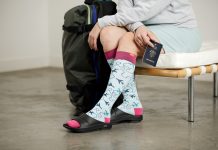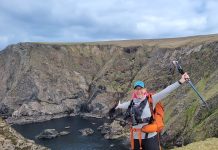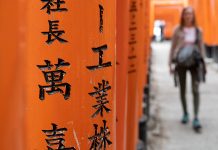This summer, cities big and small have opened their streets to pedestrians (and closed them to cars) in order to promote local community and economic benefits. Benefits like, creating a space for outdoor recreation and activities, improving accessibility and mobility, promoting community engagement, and enhancing the quality of life for local residents.
So, whether you’re a local or looking to explore like one, be sure to take advantage of the cities celebrating summer with open streets.
1. San Francisco, California
San Francisco’s Sunday Streets program—an annual season of events that reclaim city streets for pedestrian-only spaces—has returned for its 13th year.
Event routes are one to four miles in length, with free activities provided by local nonprofits, community groups, and small businesses.
Sunday Streets is a program run by the nonprofit Livable City, with a mission of “creating temporary open space and recreational opportunities in neighborhoods most lacking, encouraging physical activity, fostering community-building, and inspiring people to think about their streets as public spaces.”
2. Montreal, Canada
13 streets. 7 boroughs. Space for dining, biking, walking, art, and more. The city of Montreal, Canada has given the streets back to people this summer. For the full list and schedule of pedestrian-friendly streets, check out this article.
3. East Lansing, Michigan
Home to Michigan State University, East Lansing, Michigan is a case study in the economic benefits of open streets. Following the opening of East Lansing’s pedestrian-only Albert EL Fresco, the city’s Downtown Development Authority estimates that the street closure has increased downtown foot traffic by up to 35 percent according to their early data. Restaurants located in the downtown area also saw a 20-25 percent increase in sales in just the first week.
Albert EL Fresco runs until mid-August, with ongoing community events and programming, including yoga classes, live music, games, rotating art installations, and more.
4. New York, New York
Move over, Open Streets. Open Boulevards have arrived in New York City.
NYC’s Open Boulevards program features multiple blocks in a row closed to vehicles and open to people—and filled with outdoor dining, live performances, and other activities.
The new program will start with ten boulevards, opening on a rolling basis across the five boroughs:
Bronx
- Alexander Avenue (Bruckner Boulevard – East 134th Street)
- Arthur Avenue (East 187th Street – Crescent Avenue)
Brooklyn
- 5th Avenue in Park Slope (various)
- 5th Avenue in Sunset Park (various)
Manhattan
- Amsterdam Avenue (106th Street – 110th Street)
- Columbus Avenue (106th Street – 110th Street)
Queens
- Ditmars Boulevard (33rd Street – 36th Street)
- Woodside Ave (76th Street – 78th Street)
Staten Island
- Minthrone Street (Victory Boulevard – Bay Street)
The program will be a permanent fixture in the city.
Planning a trip to NYC? Check out our City Break: Manhattan guide.
5. Oxford, England
The city of Oxford, England’s open street project is drawing life back to its high street—and reinforcing the fabric of its community in the process. Oxford has turned Broad Street into Broad Meadow, opening the street to pedestrians and adding placemaking features like garden boxes, parklet-style seating, and expanded outdoor dining.
The historic street has been turned into a public square for the summer, as part of plans to permanently turn it into a pedestrian-only space.
6. Greensboro, North Carolina
Downtown Greensboro, North Carolina’s Open Streets program has returned for the 2021 season (they kicked off in March), creating a pedestrian-friendly Elm Street (from Market Street to Lewis Street). Every Saturday through October, visitors to the area can enjoy expanded patio dining as well as shop at local stores, all in a car-free environment.
7. Pittsburgh, Pennsylvania
OpenStreetsPGH is Pittsburgh’s way of encouraging residents to reimagine streets for people and partake in safe outdoor recreation.
This year, the event closed two miles of streets in the Hazelwood neighborhood, and hosted a series of events, including free fitness classes, learn-to-bike classes for kids, food trucks, and more.
The program is organized by Bike Pittsburgh, a nonprofit organization that works on behalf of the Pittsburgh community “to transform the city’s streets and communities into vibrant, healthy places by making them safe and accessible for everyone to bike and walk.”
About the Author
There has never been a better time to plan your next trip and make your Dream vacation a reality . Whether you've been dreaming of relaxing on a sun-kissed beach, exploring ancient cities, or embarking on an epic adventure, now is the perfect moment to make it happen.













